Area 3,965 km² | Time zone PST (UTC+8) | |
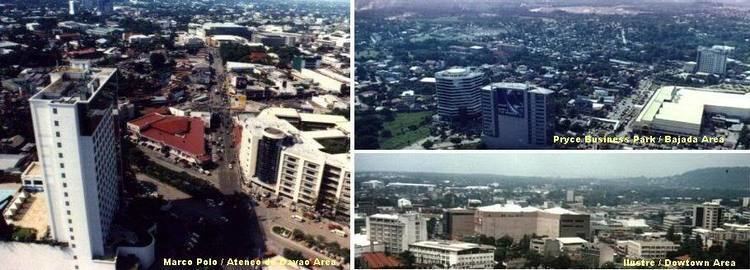 | ||
Cities and Municipalities 7CarmenDavao CityDigosPanaboSamalSanta CruzTagum Weather 31°C, Wind NE at 18 km/h, 59% Humidity Provinces Davao del Norte, Davao del Sur | ||
Metro Davao, officially called Metropolitan Davao (Cebuano: Kaulohang Dabaw, Filipino: Kalakhang Dabaw), is a metropolitan area in the Mindanao island group, Philippines. It includes the cities of Davao City, Digos in Davao del Sur province; Tagum, Panabo and Samal in Davao del Norte province. The metropolitan area also encompasses the two municipalities of Carmen in Davao del Norte and Santa Cruz in Davao del Sur. Metro Davao is one of three metropolitan areas in the Philippines.
Contents
- Comparison to other Philippines metropolitan regions
- Formation of the Metropolitan Area
- Government
- Definitions of Metro Davao
- Geography and Demographics
- Economy
- Agriculture
- Transportation
- Energy
- Sanitation
- Education
- Media
- References

Comparison to other Philippines' metropolitan regions

The agglomeration of Metro Davao has no formal legal framework early on its initial stage of development process either by an act of Congress, by an executive declaration of the President or by a formal agreement among component cities and municipalities of the metropolitan area.
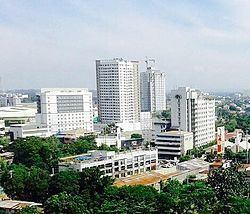
In the case of Metro Manila, the component cities and municipalities were grouped into a province through a [decree issued by then-President Ferdinand Marcos, and designated the former first lady Imelda Marcos as governess. From then on, Greater Manila, as it was known earlier, became Metro Manila.
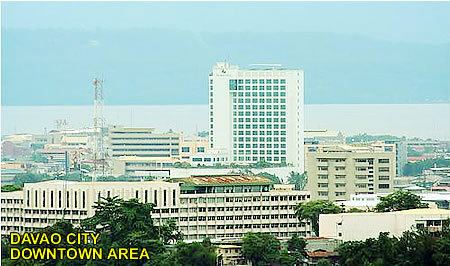
To formalize its juridical identity, Congress passed into law Republic Act No. 7924, instituting the Metropolitan Manila Development Authority. Under the current law, the head of the agency shall be appointed by the President and should not be on a concurrent elected position as mayor.
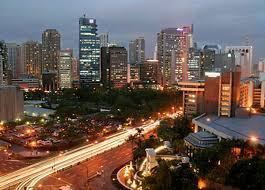
Metro Cebu is a concept created in the 70's and formally adopted by the Regional Development Council of Central Visayas as a platform for integrating parallel development in the metropolitan area.
Formation of the Metropolitan Area
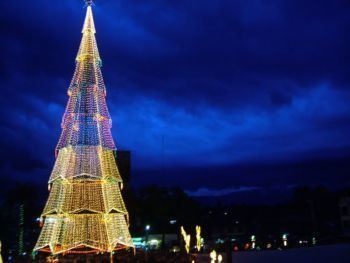
Although Metro Davao was formed in 1995 by mayor Rodrigo Duterte, the mayor of Davao City at that time, it does not have the birth perspective of either Metro Cebu or Metro Manila. The metropolitan concept of Metro Davao is being spearheaded by the mayor but no formal agreement or an act of congress have been executed to formalize its legal and juridical identity. Because of this, the region, having no official legal framework (although they have a de facto one, the Davao Regional Development Council), exists not as a juridical identity but only as an informal reference to the area. However, the said council have formally adopted the concept in 1996 for the development of the area, especially Davao City.
Government
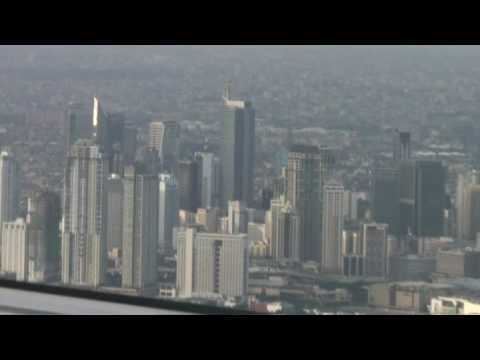
Metro Davao is not an administrative political unit but an agglomeration of independent local government units, the third level government in the Philippine political system. It already has its three own development and governance councils, namely: Davao Integrated Development Program Board, Metropolitan Davao Committee, and Metropolitan Davao Management Office. As of now, the Davao Integrated Development Program Board serves as the metropolitan area's development council, since Metro Davao not only defines the LGUs in the said metropolitan area, but also all of Davao Region.
Definitions of Metro Davao
As years passed on, the definitions of Metro Davao had changed in recent years. Metro Davao, as of now, has taken on three identical geographical definitions, namely:
Geography and Demographics
The metropolitan area has 3,964.95 km², making it one of the two most area-wise largest metropolitan areas in the Philippines, the other being Metro Cagayan de Oro; it also has a population of 2,516,216 in the combined population sizes of the local government units that make up the metropolitan area during the 2015 census, making it as the third most populous metropolitan area in the country after Metro Manila and Metro Cebu, and the most populous in the entire Mindanao island.
However, as based on geographical studies, only about 12% of the portion of its land area accounts for its urban area, the rest are rural; however, almost 80% percent of the population live in the urban areas, primarily at Davao City, Tagum, and Digos. Thus, the metropolitan area centered around Davao City is considered as urban.
Economy
The economy of Metro Davao is one of the largest in the country and the most economically active in Mindanao. Davao City, from which the metropolitan area is centered, is known as the Crown Jewel of Mindanao due to its status as the premier city, the financial and trade center, and hub of Mindanao.
There are several industrial and business establishments within the metropolitan area as well. Industrial plants in Davao City, Santa Cruz and Digos generate income for their respective LGU's as well as for the locals living there. Banana plantations in the northern part of the metropolitan area also contribute to the metropolitan, as well as the national, economy. Local fruits such as durians, mangoes, pineapples and mangosteens are also exported abroad.
Agriculture
Davao City is one of the country's leading producers and exporters of durian, mangoes, pomeloes, banana, coconut products, papaya, mangosteen, and even flowers. Panabo hosts one of the country's biggest banana plantations, which is owned by the Tagum Agricultural Development Company (TADECO) that covers around 6,900 hectares of banana fields. Digos is popular for the mangoes produced in the city.
Transportation
The international airport in Davao City, Davao City International Airport, is the largest and most developed in Mindanao, has the second longest runway in the island after that of General Santos International Airport, and the third busiest in the country, after Ninoy Aquino International Airport and Mactan-Cebu International Airport. It can handle both domestic and international flights, serving several flights to Manila, Cebu, Iloilo, Cagayan De Oro, Zamboanga, Pampanga, Bacolod and as far as Singapore, China, and Saudi Arabia, it is the only airport in the island to handle flights like these. Its ATC Tower is the most advanced in the country. The airport serves the metropolitan area as well as the region as a whole.
Three of the four main seaports in the region operate in Metro Davao, namely: Sasa International Seaport in Sasa and Santa Ana Pier in the Chinatown District, both in Davao City; and Panabo Seaport in Davao del Norte. The former two, both of which are located in Port of Davao in Davao City, can service both interisland and international shipments. Sasa International Container Port, also located in the Davao International Seaport, is one of the busiest in the entire Visayas-Mindanao region.
Located near Quimpo, the Davao Overland Transport Terminal, connected to the Capital Manila by buses, Philtranco Flag Carrier Bus, PP Bus Line and from Visayas the Bachelor Tours. To the south by Mindanao Star passing Digos, General Santos, Koronadal, Shariff Aguak via SurAllah, Cotabato and Others to the south, the Yellow Bus also serve to the south via an Inter-National Highway.
Energy
Cities of Davao and Panabo, together with the municipality of Carmen is electrified and is served by Davao Light an AboitizPower Distribution Utilties subsidiary.
Sanitation
Davao City has its own water service. An inter Regional Water Service and Development from Compostela Valley Region specifically Nabunturan City.
Davao City and Panabo City shares its sanitary landfill at Brgy. Carmen vicinity while Town of Carmen and Tagum City has their own near Tagum city boundary.
Education
Metro Davao has a number of educational institutions catering to the needs of its residents. These colleges and universities are mostly found in Davao City. There are also a number of international schools that serve the metro. Here are some notable institutions in Metro Davao.
Public
Private
Media
Davao City, having over a million night-time population and an estimated 4 million day-time population is home to many media outlets. Large media networks like ABS-CBN Broadcasting Network, GMA Network, Inc., TV5 Network, People's Television Network, and RPN9 maintain their respective local stations and branches for viewership, commercial and news coverage purposes. Most of these stations broadcast local news and public affairs as well as entertainment and dramas to cater the local viewers.
Aside from the 24 national daily newspapers available, Davao City also has 21 local newspapers. Among the widely read are the Sun Star Davao, Mindanao Times and the Mindanao Examiner.
